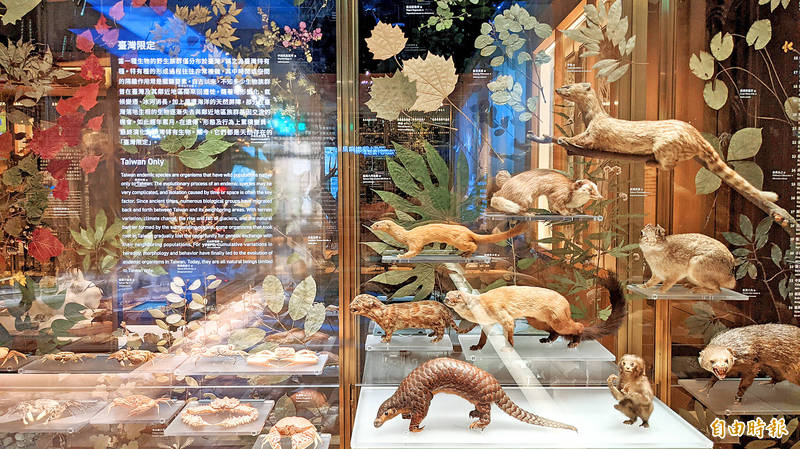《TAIPEI TIMES》 Taiwan in two rooms
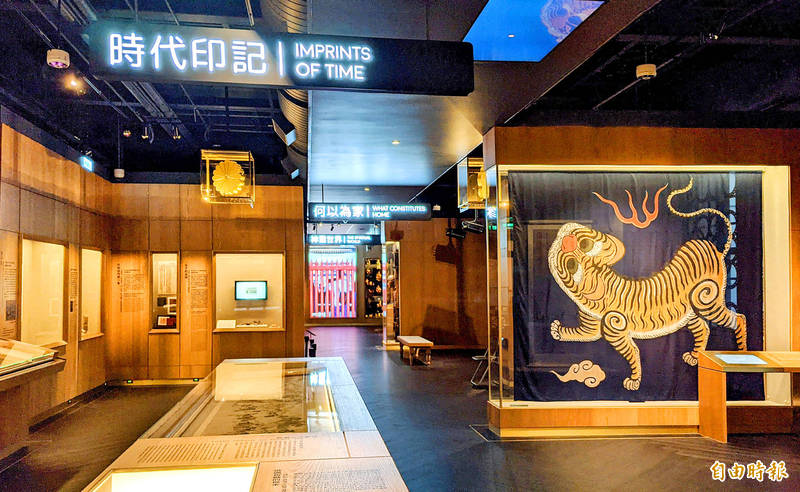
An overview of the cultural history portion of the National Taiwan Museum exhibition, Exploring Taiwan. Photo: Han Cheung, Taipei Times
A new must-see exhibition at Taipei’s National Taiwan Museum highlights the natural and cultural diversity of Taiwan’s past and present, illustrating the uniqueness of its people and natural environment
By Han Cheung / Staff reporter
You can breeze through Exploring Taiwan (博物台灣) in less than an hour — or spend all day here examining, for example, every location on the oldest Chinese landscape-style map of Taiwan or learn more than you ever wanted to know about the nation’s rocks.
The National Taiwan Museum’s (國立台灣博物館) new permanent exhibition showcases unique specimens and artifacts from the nation’s layered human and natural history, but one of the more impressive features is the thoughtful and incredibly informative interactive displays accompanying the objects.
Another panel showing videos and images of festivals in Taiwan allows the user to switch between the lunar and solar calendars, and includes not only Han and Aboriginal celebrations, but also Western and Southeast Asian ones that are observed by other populations in Taiwan. Just going through these clips can keep you here for a while.
The tastefully designed, wood-themed exhibition is divided into two parts on each wing of the museum’s second floor; you can start at either one. The portion about natural history is pretty straightforward and extensive, filled with objects ranging from fossils to gems to various flora and fauna organized by elevation.
Like the cultural part of the exhibition, diversity is emphasized and the focus is on how Taiwan’s varied landscapes, elevation and climate contribute to its biological richness. This part ends with a discussion about sustainability and our impact on the environment.
In addition, visitors can view a nature video sitting alongside sculptures of a clouded leopard and Formosan black bear, and listen to the sounds of nature on a wall carved from wood from the camphor tree, oil from which was once Taiwan’s most coveted commodity.
It’s much more difficult to explain the nation’s complex cultural history in one hall, and this exhibition doesn’t try that difficult feat. You’ll need some basic knowledge of Taiwan’s past and present to fully appreciate this portion of the exhibition, which whisks the visitor through time with 16 fascinating historical objects before exploring its population’s idea of “home.”
Since the entire show is meant to explore the nation’s diversity, the curators are very conscious of representation. For example, they explain in the first display — a series of 19th century paintings of Taiwan’s Aborigines by a Han Taiwanese artist — that “this work seems realistic, but it actually reflects the Han people’s stereotypical impressions … It may be regarded as a simplistic visual version of how Han Chinese interpreted the indigenous culture at that time.”
The historical objects mostly deal with Taiwan’s interactions with the outside world, including an Aboriginal-language shopping list written in the Dutch-imparted Latin alphabet, a painting that supported the Japanese colonizers’ push to eradicate the longstanding Han practice of foot binding and the pens that were used to sign the Sino-American Mutual Defense Treaty in 1954.
The giant, double-sided blue-and-yellow tiger flag of the short-lived Republic of Formosa is probably the most striking. The original version has been lost, and on display is a digitally reconstructed version the museum created in 2012. What’s unique with this flag is that it provides a glimpse of the “other” side of the flag that is rarely seen in modern depictions.
The rest of the show deals primarily with the traditional and modern life of Taiwan through video, art installations and more objects. Especially of note is the collection of “discarded” statues of Buddhist and Taoist deities that people threw away over the years for various reasons. They’re often left outside Taipei’s Longshan Temple (龍山寺), which de-sanctified them and donated 271 to the museum in 2015.
Finally, the section of objects various peoples created to represent “the other” gives much food for thought. The Japanese depicted the Taiwanese in miniature figurines, Westerners (quite inaccurately) imagined the locals on their Formosan tea labels, Aborigines created carvings of the Japanese soldiers who subjugated them and the Han presented a variety of ethnicities through their traditional hand puppets.
Both sides of the exhibition end with a MIT (Made In Taiwan) display, arranging the letters with mini models of the natural creatures of Taiwan (pineapple and Formosan magpie) and its human-made products (including bubble tea).
Overall, the exhibition is a wonderful journey that is well-worth seeing. We often forget how unique Taiwan is, especially during these times when it’s difficult to travel overseas, and this show reminds us to appreciate Taiwan more.
新聞來源:TAIPEI TIMES
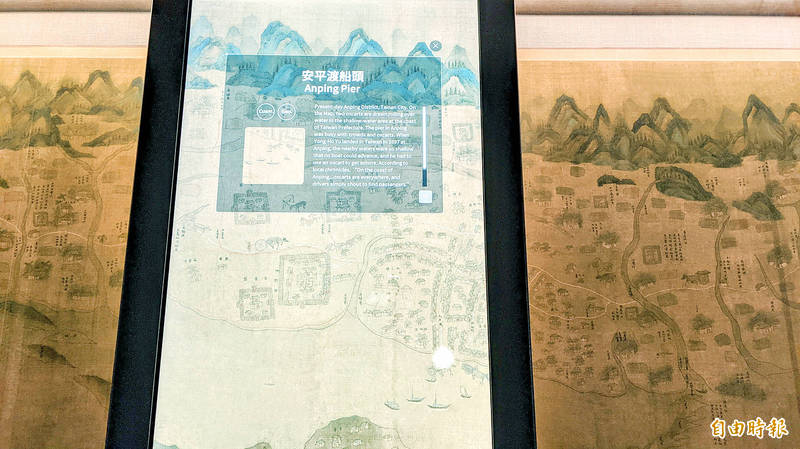
This interactive panel displays the earliest Chinese landscape-style map of Taiwan, showing details of each location. Photo: Han Cheung, Taipei Times
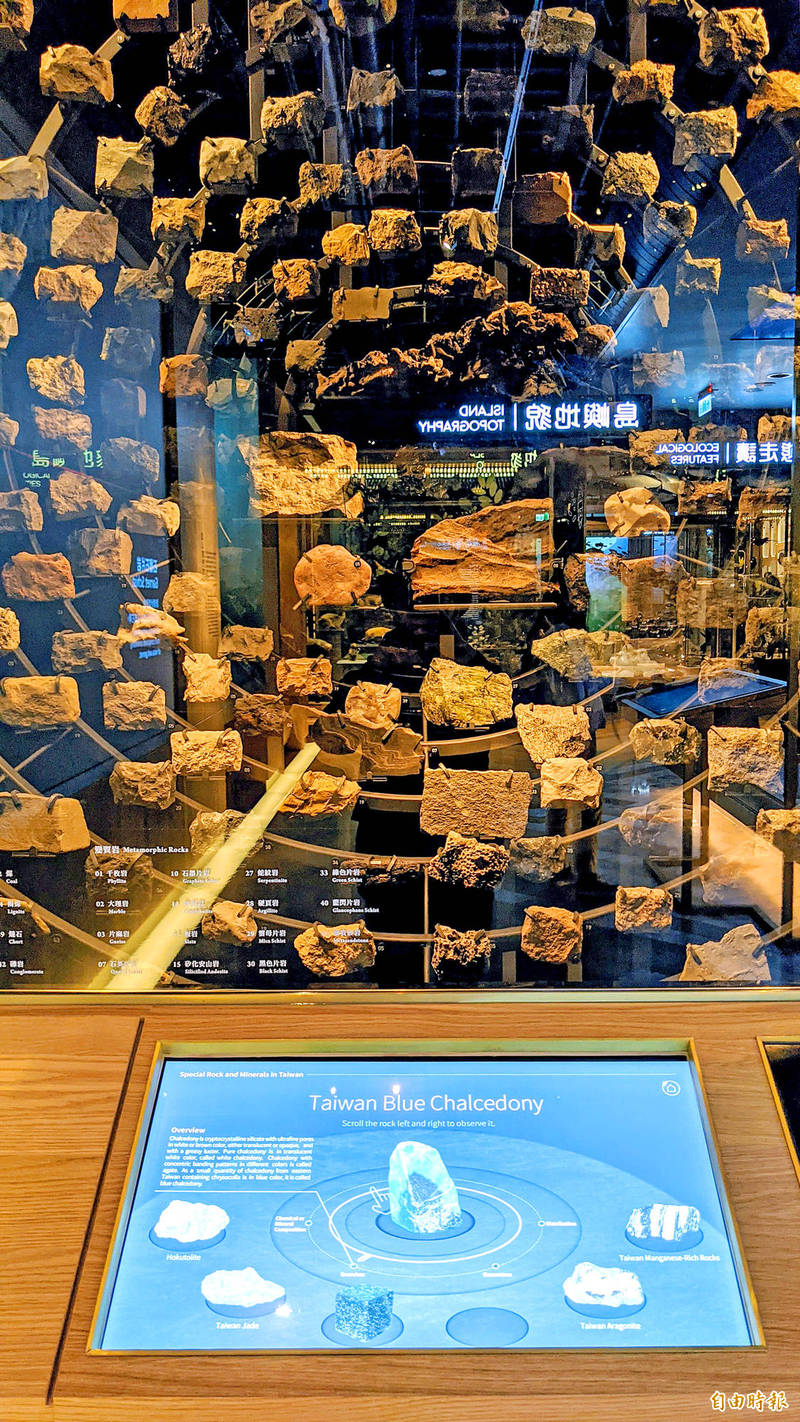
This interactive display tells you more than you’ll ever want to know about rocks in Taiwan. Fossils are displayed in the natural history portion of the National Taiwan Museum exhibition, Exploring Taiwan. Photo: Han Cheung, Taipei Times
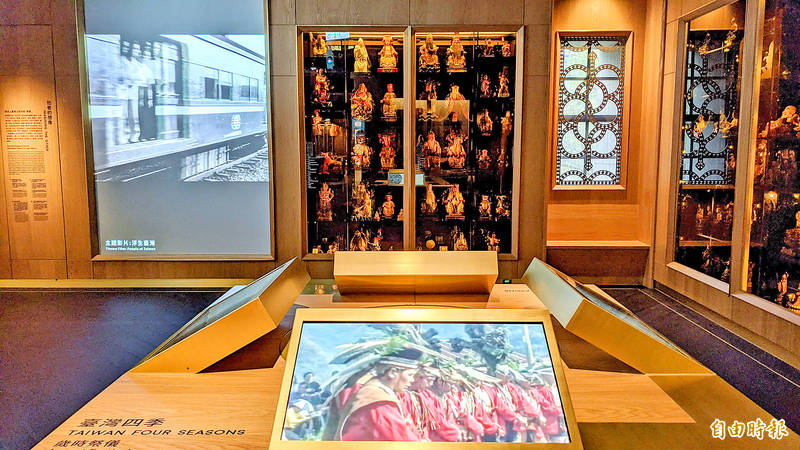
A display shows an Aboriginal harvest festival while abandoned Han deities are dispalyed in the back. Photo: Han Cheung, Taipei Times
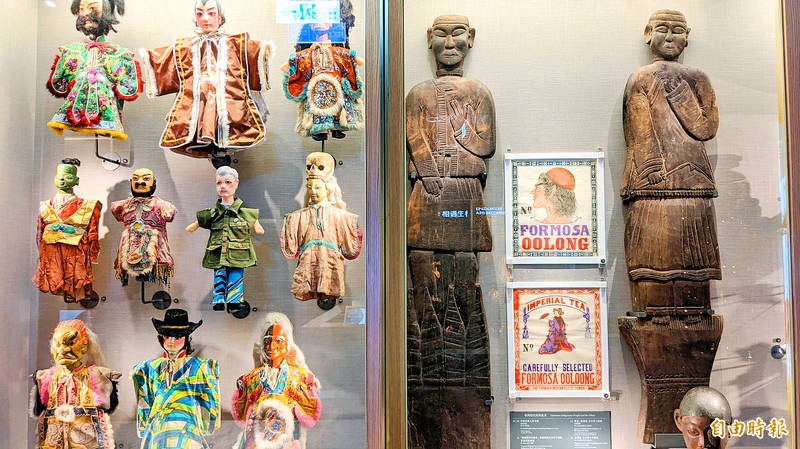
Han Taiwanese depictions of foreigners in hand puppets, left, and Aboriginal depictions of Han Taiwanese and Western labels of Formosan Tea. Photo: Han Cheung, Taipei Times
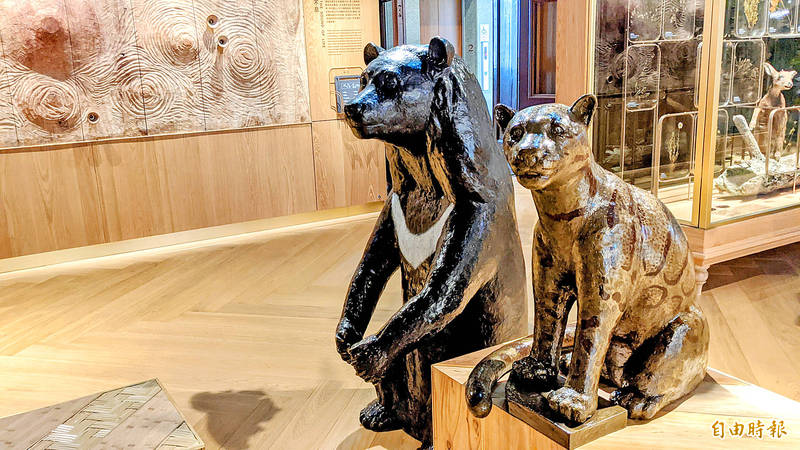
Viewers of a nature video can enjoy the company of a Formosan black bear and a clouded leopard. Photo: Han Cheung, Taipei Times





